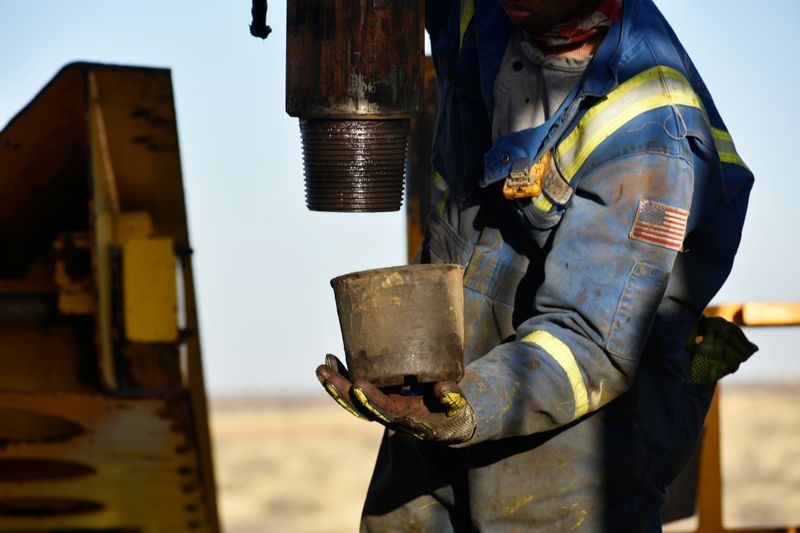By Arathy Somasekhar
HOUSTON (Reuters) -Top U.S. oil producer Exxon Mobil (NYSE:)’s planned acquisition of the No. 1 Permian shale producer Pioneer Natural Resources (NYSE:) could further restrain output growth in the largest U.S. oilfield, squeezing pipeline companies and suppliers, executives and energy advisors said.
Consolidation, steep cost inflation and investor demands for returns have shrunk production growth this year in the Permian shale formation in West Texas and eastern New Mexico. Permian crude production is forecast to rise this year by about 430,000 barrels per day (bpd), well below the 1 million-bpd gain in 2019, according to government data.
Exxon, the fifth largest producer in the Permian, has set an up to 1 million-bpd target for its operations there for 2025 and more recently pushed it back to 2027. Buying Pioneer would boost its output to about 1.33 million barrels of oil and gas equivalent per day, well above its goal.
“With this Pioneer deal, there is a possibility that Exxon might say they’ve achieved that growth target for Permian production and so they don’t have to grow as rapidly as they originally intended,” says Ajay Bakshani, director of analytics at research firm East Daley Analytics.
Exxon has declined to comment on any acquisition discussions. CEO Darren Woods said in June that developing technology in-house ultimately will allow Exxon to better identify acquisition targets.
U.S. oil producers are pumping more oil, but the pace of growth has slowed due to lower drilling activity. Mergers also have chipped away at drilling budgets, analysts and industry executives said.
Overall, oil companies have cut 36 active drilling rigs in the Permian in the last year, a 10% drop. Rigs are an indicator of future output. [RIG/U]
Recent shale consolidation, including Civitas Resources and Callon (NYSE:) Petroleum-Percussion, also led to reductions in the combined companies’ active drilling rigs.
Dropped rigs affects the broader oilfield service business and pipelines as the consolidation means less equipment rentals, fewer roughnecks and customers to compete for their business. Past mergers have led to job cuts at acquired companies.
“There’s no question the position of that magnitude or size would give them considerable leverage in negotiating or contracts with the service providers,” said Ben Crook, a portfolio manager at Hennessy Energy Transition Fund.
The White House would struggle to thwart the acquisition, antitrust lawyers and experts said last week.
Pioneer ships most of its oil to market on Targa Resources (NYSE:) pipelines, while Exxon relies more on Energy Transfer (NYSE:) and to a lesser extent on Targa, East Daley’s Bakshani said.
A Pioneer deal could see Exxon shift more volumes on pipelines it co-owns, such as the Wink-to-Webster line co-owned as part of a join venture that includes Plains All American and MPLX (NYSE:) among others.
The combined company “might be able to negotiate better pricing for themselves based on the sheer volume of the work they’ll create,” said Robert Webster, CEO of oil, gas and carbon storage advisory Intermontane Oil LLC. “Volumes always wins when it comes to contracting.”
Read the full article here



